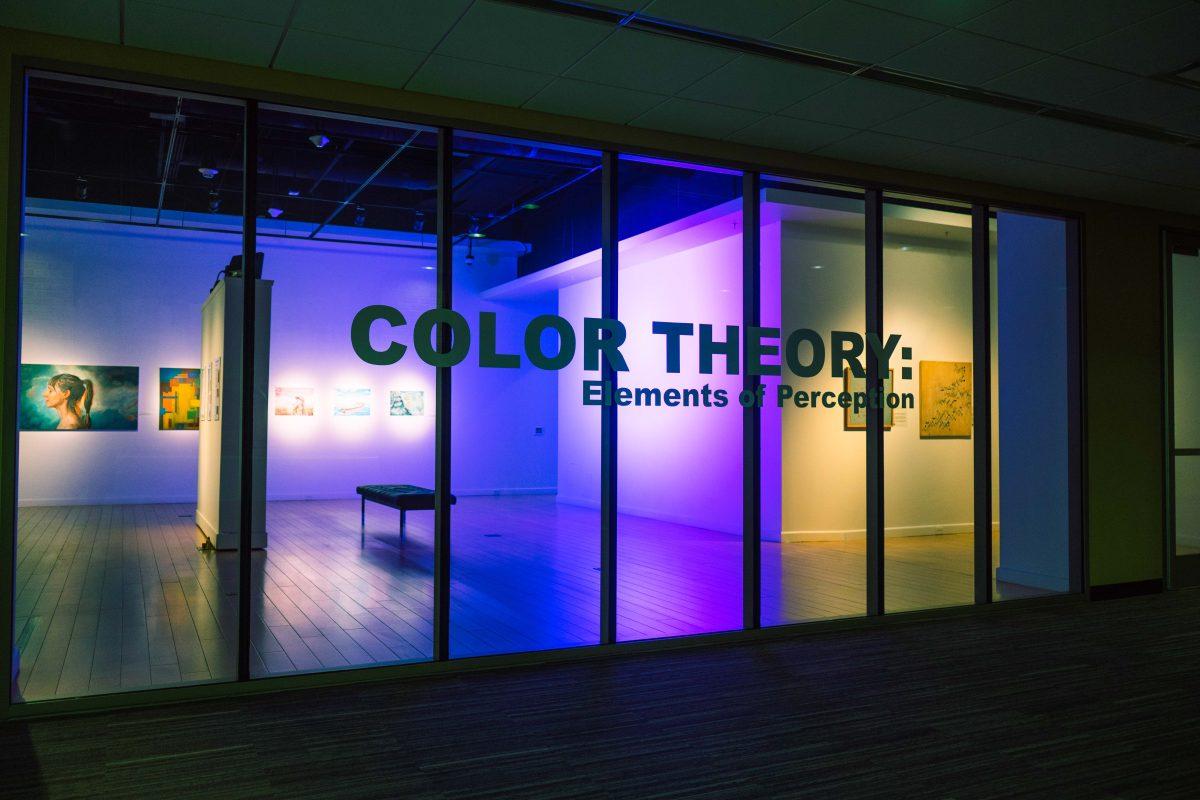The Reynolds Gallery’s first exhibit of the semester, “Color Theory: Elements of Perception,” is allowing students to explore and interact with unique pieces of art to gain a deeper appreciation of everyday color.
The MSC Visual Arts Committee opened the “Color Theory: Elements of Perception” exhibit on Sept. 9 and will remain available until Nov. 24. Due to the COVID-19 pandemic, the organization also created an online platform for students to attend the exhibit remotely. It will showcase various artwork created by professors and graduate students within the College of Architecture for visitors to observe freely.
Joshua Carley, performance studies junior and Reynolds Gallery director, said the exhibition’s purpose is to give students a broad overview as an introductory crash course to color theory.
“We developed this exhibit with some of the color theory professors who teach at the university,” Carley said. “Color theory, as of now, is only taught to visualization majors… [but] we wanted to make sure that the color theory can be instructed in a way that everyone can get something from it.”
In the gallery, Carley said they have on display physical examples of how color theory can be used in art.
“Currently, we have a light wall that cycles through the sector on how color and lighting of color interact with each other. You can visually see the shifting tones of color,” Carley said. “There are [synthetic] musical examples as well. We have some QR codes put out, so people can scan it with their own devices and listen to the music that inspires the color in [the] artwork.”
Laurie Lisonbee, an assistant instructional professor in the Department of Visualization and contributor to the exhibit, said color and music both function according to wavelengths. People cannot separate artistic approaches to color theory without understanding some of the science behind it, Lisonbee said.
“Different pitches have different wavelength frequencies, and that’s how our ears discern different sounds. The same is true of color,” Lisonbee said. “It’s the combination of these various wavelengths that allows us to see way more than just seven hues of the rainbow but millions of distinct, different colors.”
Lisonbee said her two pieces in the gallery are from a body of work she did exploring the music of J.S. Bach. She said she focused on synesthesia, the crossing over of the physical senses between the oral and the visual.
“I took the two-part keyboard inventions of Bach, and each one became a painting that translates the notes of the music… into little shapes… with a color system,” Lisonbee said. “They actually serve as a visualization and a transcription of the music [and] also my emotional response to the music. I would always ask myself, ‘If this music had a physical presence outside of sound, if it had a visible presence, what would it look like?’”
In addition to incorporating other artworks such as faculty member Benjamin Knox’s original color wheels and graduate students’ focus on color relationships, Carley said MSC VAC decided on color theory because it is universal for all individuals to enjoy.
“It’s something that speaks to everybody in their everyday life,” Carley said. “I encourage people to come in and see the talents that students and faculty at this university have, as well as just finding a way to take 10 to 15, maybe 20 minutes out of your day just to learn something new.”
For students who cannot attend the gallery, all artwork was photographed and uploaded to a virtual platform for open access, said Margaret Meyers, visualization junior and MSC VAC graphics director.
“We have a link [to] a PowerPoint presentation, and you get to click through it and see each wall and each piece that is in the exhibit,” Meyer said. “We have educational text panels [to explain] how colors interact with other colors. There’s some really great pieces in there.”
Reynolds Gallery exhibit showcases color theory in art
September 22, 2020
Donate to The Battalion
Your donation will support the student journalists of Texas A&M University - College Station. Your contribution will allow us to purchase equipment and cover our annual website hosting costs.





















